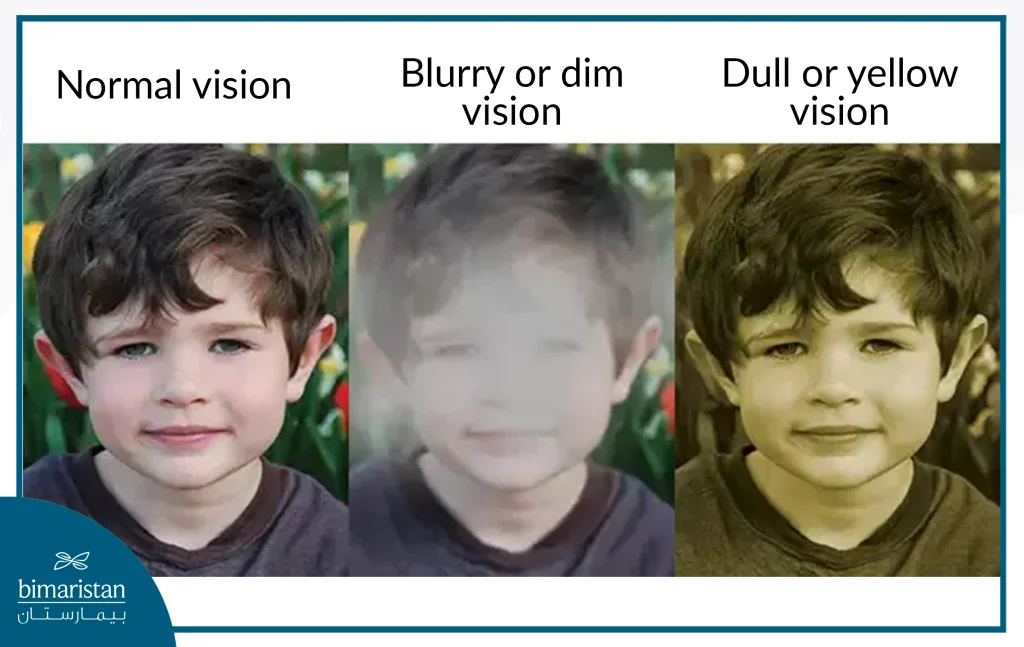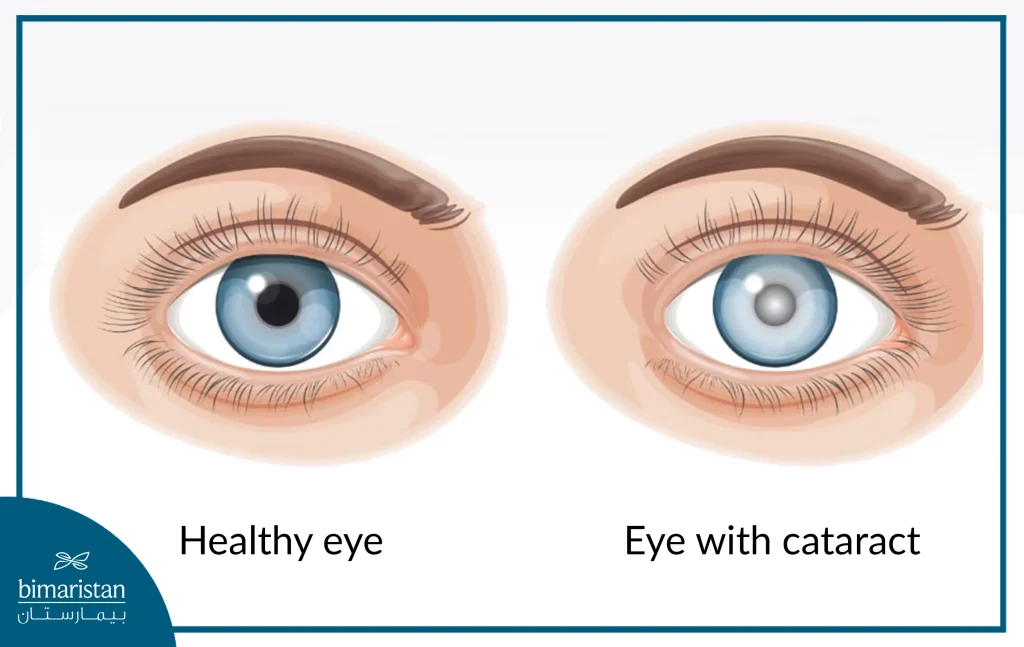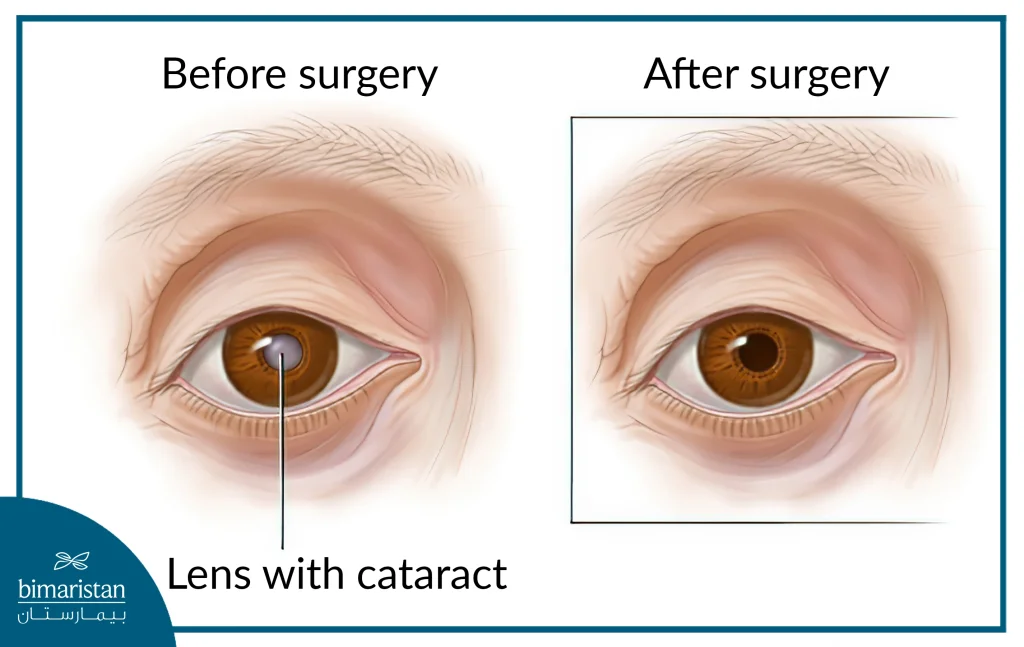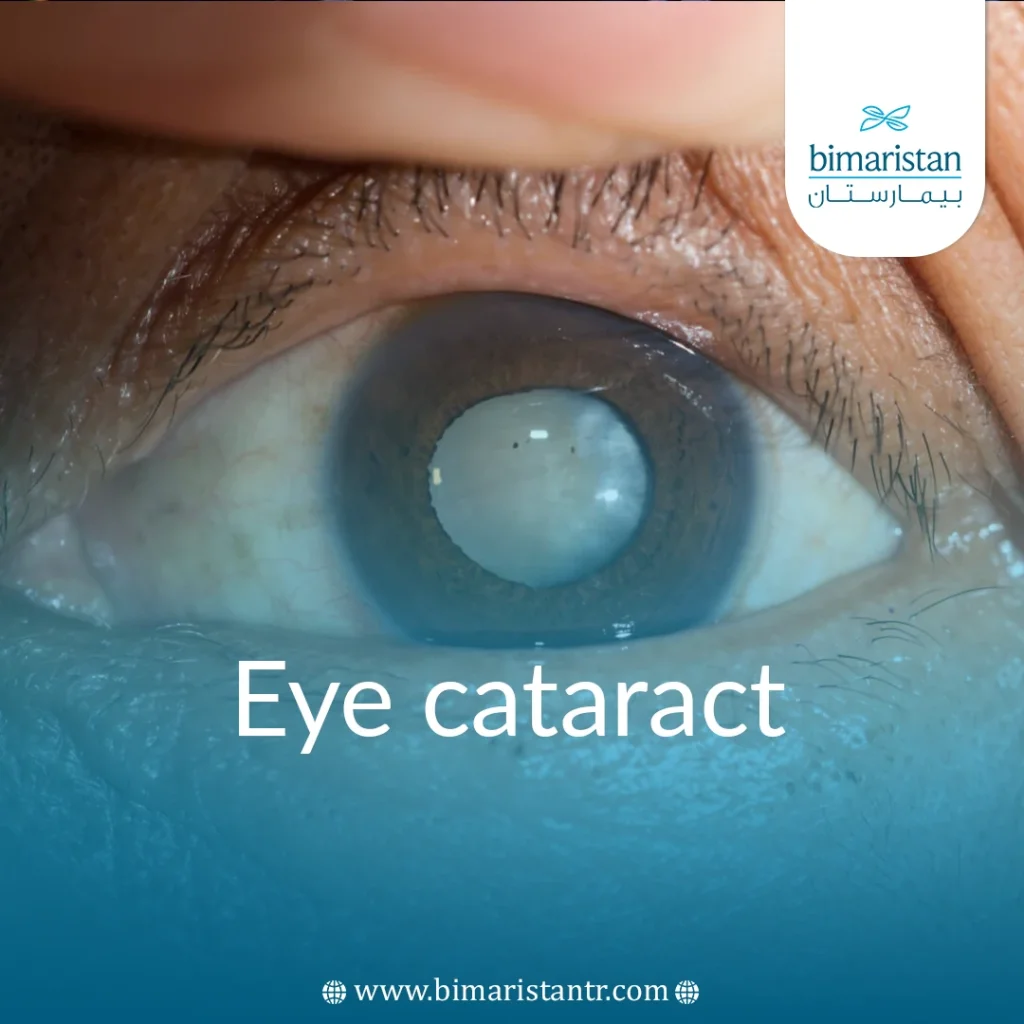The natural lens focuses images of visible objects on the back of the eye so that vision becomes completely clear. This lens is clear at birth, but as we age it turns yellow and hardens, which is called an eye cataract.
Cataracts are the leading cause of vision loss in people over the age of 40. According to the National Institutes of Health in America, the average age of a patient undergoing cataract surgery is about 65, and this average has been decreasing steadily over the past decade.
What is an eye cataract?
In a normal eye, light travels unimpeded through the transparent media of the eye and is then focused on the retina.
The lens is a structure that is partly responsible for helping to focus the eye. When the lens becomes yellow or cloudy, it can limit the amount of light that passes through it, leading to cataracts, where vision becomes more difficult, as well as glare, blurry or dim vision.
Symptoms of eye Cataracts
Cataracts develop slowly in the lens of the eye, and often, the patient does not know they have them until they begin to significantly obscure vision.
Common symptoms of cataracts include:
- Blurred vision and nearsightedness (in older people)
- Gradual change in the way you see colors
- Poor night vision
- Glare or halos
- Frequent changes in your eyeglass prescription
- Difficulty reading in low light
- Double vision

Causes of cataracts in the eye
Aging is the most common cause due to natural changes in the eye that begin to occur after the age of forty. This is the time when the natural proteins in the lens begin to break down and precipitate. Other causes include:
- Genetics
- Eye trauma
- Diabetes
- Excessive exposure to sunlight and use of steroids
- Excessive smoking and alcohol
The effect and danger of cataracts on the eye
Cataracts on the eye are not dangerous in themselves, but neglecting to treat them may lead to severe complications, including:
- Poor vision, which causes injuries or accidents
- Excessive opacity of the lens and difficulty in surgically removing it increases the likelihood of complications from surgery.
- Blindness in advanced cases
- Increased risk of other eye problems such as glaucoma and macular degeneration, as well as refractive errors such as myopia and hyperopia

Eye cataracts of infants (congenital cataracts)
In 25% of cases, cataracts are genetic, meaning the child’s parents also had cataracts in childhood.
There are two types of congenital cataracts:
- The type associated with a syndrome: In this type, cataracts are associated with other birth defects or health conditions. Some children with congenital cataracts may also have Down syndrome.
- Non-syndromic type: In this type, cataracts are a single condition and are not associated with other defects or health problems.
Cataracts in infants may occur as a result of an injury during pregnancy. Physical trauma during pregnancy can cause damage to the baby’s eyes in the womb and lead to the formation of cataracts.
Infection during pregnancy is an essential cause of cataracts in infants, as a pregnant mother can transmit certain types of infections to her baby in the womb, which can cause birth defects and other health problems for the baby.
Eye cataract in Children
Acquired cataracts are rare in children. They can affect one eye (unilateral) or both eyes (bilateral).
Cataracts in children are no different from those in infants, but the cause of cataract formation may differ, which is often congenital.
Eye Cataract Treatment in Turkey
With the development of laser cataract surgery and other techniques, cataract treatments in Turkey have become safer and more effective than ever.
Cataract Treatment without Surgery
The main focus of cataract treatment is surgery, but if the patient’s vision is slightly affected, he can take some measures to relieve discomfort or difficulty seeing. These include:
- Wearing sunglasses or a hat to reduce glare outdoors
- Adjusting your computer screen settings to be suitable for night vision
- Use magnifying lenses or special reading glasses when reading small print
- Placing lights and lamps in the house so that their glare is not directly on the face
- Not driving at night to avoid accidents
- Using curtains to reduce bright sunlight entering the house
These tips only lessen the symptoms of cataracts, and surgery must be performed to correct the problem permanently.
Eye cataract surgery on the eye (lens replacement surgery)
Before cataract surgery on the eye
About a week before surgery, the doctor performs some tests to measure the size and shape of the patient’s eye. These tests help the ophthalmologist choose the appropriate type of artificial lens (IOL). Some of the following actions may be taken:
- Using eye drops to protect the eyes from infection
- Stopping certain medications, such as blood thinners
- Stopping eating and drinking several hours before surgery
During eyeNo, there is no way to treat cataracts except surgery, which is the final treatment for it. cataract surgery
During surgery, the eye surgeon removes the cloudy lens from the eye through small incisions in the eye and replaces it with an artificial lens (called an intraocular lens or IOL). The surgery takes about an hour and is almost painless. The patient is awake during the surgery and may notice lights or movement but will not be able to see what the doctor is doing.
After the doctor places the new lens, the patient needs to rest briefly before returning home.
After cataract surgery
The doctor will explain to the patient how to protect the eyes after surgery and will prescribe eye drops to help with healing. The patient may need to wear an eye shield or glasses, and some activities such as touching the eyes, bending over, or lifting heavy objects should be avoided for a few weeks.
Itching or sensitivity to light is common after surgery and is not a cause for concern, but you should see your doctor immediately if you notice any of these problems after surgery:
- Loss of vision
- Severe pain that does not go away with painkillers
- Severe redness of the eyes
- Multiple halos
Most people recover completely after eight weeks of surgery, and your doctor will schedule check-ups to ensure proper healing.

Eye Cataract Surgery Success Rate
Most people achieve very good results after cataract surgery, with a success rate of about 99%. Complications from cataract surgery are rare but may include corneal swelling, eye inflammation, and increased eye pressure.
Causes of intraocular pressure increase after cataract surgery
High eye pressure is often multifactorial, and causes include:
- A defect in a previous eye surgery
- Surgical trauma and excessively tight wound closure
- Residue in the diseased lens
- Blood edema and infections
Increased surgical experience is associated with a lower risk of increased eye pressure after cataract surgery.
Cost of cataract surgery in Turkey
The price of cataract surgery, which includes lens replacement, in Turkey ranges from $500 to $3,000. Turkey is at the forefront of the medical field and provides treatment at competitive prices. Turkey outperforms America and some European countries in terms of surgical prices without any decrease in quality and efficiency.
Finally, it is important to know that the disease cannot be stopped once the lens begins to cloud. Researchers are exploring different ways to treat cataracts, but currently, surgery is the only way to correct the problem.
Sources:
